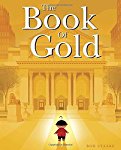Taking a leap into the unknown is scary, and yet people all over the world do it every day, and have been doing it for centuries. Explorers have set off to seek out new lands, and inventors have dared to put forward their ideas, not knowing how they would be received. Writers have written books about controversial subjects, and artists and musicians have pushed the boundaries of artistic expression.
In this beautiful picture book we meet a group of animals who embark on an adventure to visit a place they have never been to. They soon discover that adventures can be rather uncomfortable things, and they have to decide if adventuring really is a good fit for them after all
 The Antlered Ship
The Antlered Ship
In this beautiful picture book we meet a group of animals who embark on an adventure to visit a place they have never been to. They soon discover that adventures can be rather uncomfortable things, and they have to decide if adventuring really is a good fit for them after all
 The Antlered Ship
The Antlered Ship
Dashka Slater
Illustrated by the Fan Brothers
Picture Book
For ages 4 to 6
Simon and Schuster, 2017, 978-1-48145160-4
Marco lives in the Land of the Foxes, and his brain teems
with questions about the world. When he asks the other foxes his questions they
don’t know what to think of Marco. All they care about is their stew. What do
Marco’s questions have to do with that?
Marco decides to
head for the harbor to greet the antlered ship that has just arrived. Three
deer disembark and they freely admit that they need some help. It turns out
that they are not “very good sailors.”
Hoping to find
the answers to his questions, Marco volunteers to join the deers’ crew. A flock
of pigeons would also like to join as they want to have some adventures. The
Captain, Sylvia, explains that they are headed for a wonderful island.
The antlered
ship sets sail and it is not long before they encounter a storm. Everybody on
board is miserable and unhappy about the conditions. The deer begin to think
that they should have stayed in the woods, and the pigeons decide that they
should have stayed in the park. Marco comments on how foxes are not meant to be
vegetarians, and yet he still thinks that they should all do “the best we can.”
That evening he
cooks everyone a warming stew, and then they all consult the charts to figure
out how to get Sweet Tree Island, which is their destination. Finally, the
storm dissipates and they are able to raise the sails under a beautiful full
moon.
In the morning
they come to the Maze of Sharp Rocks. They could easily get wrecked on the rocky
shoal, but the pigeons fly ahead and find a clear path for the ship to follow.
The travelers are getting close to Sweet Tree Island when they are waylaid by a
pirate ship. Adventures seem to be waiting for them around every corner.
Young readers
are going to love this delightful and richly illustrated picture storybook.
They will appreciate the fact that adventures sometimes have uncomfortable and
even frightening moments, but that does not mean that one shouldn’t take them
in the first place.









